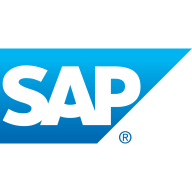

Google App Engine and SAP Cloud Platform are competing in the cloud solutions sector for businesses, with SAP Cloud Platform generally having an advantage due to its comprehensive features, whereas Google App Engine is more cost-effective and offers excellent support.
Features: Google App Engine is known for robust scalability, seamless integration with other Google services, and maintaining application reliability under fluctuating workloads. SAP Cloud Platform excels in offering a broad suite of business process tools, integration with SAP enterprise applications, and business process capabilities.
Room for Improvement: Google App Engine could enhance its service flexibility, provide a more advanced dashboard experience, and offer greater support for diverse database options. SAP Cloud Platform can improve in terms of expanding features beyond the SAP ecosystem, enhancing non-SAP application integration, and accelerating maturity in emerging features.
Ease of Deployment and Customer Service: SAP Cloud Platform simplifies deployment with ready templates and strong SAP application integration, and is well-received for customer service. Google App Engine offers quick setups with automated scaling but requires more technical expertise, appealing to developers valuing rapid deployment and efficient technical support.
Pricing and ROI: Google App Engine’s pay-as-you-go model makes it cost-effective for startups and variable workloads, delivering strong ROI. SAP Cloud Platform involves higher setup costs due to its specialized tools, but offers a favorable ROI for SAP-centric enterprises. Google provides scalable pricing, while SAP focuses on enterprise feature-rich models.
Once we deployed this same application as part of Google App Engine, the cost drastically reduced to just $120 for the small instance we use for our development.
Operationally, it was efficient for us because we could easily spin up new versions to demonstrate new functionality without modifying the original environment.
Google App Engine offers discounts for high resource utilization, similar to committed use discounts for Compute Engine.
Top management buy-in is crucial, and conducting an ROI analysis is essential before adoption to ensure the investment aligns with value.
Orders are managed online, integrated with S/4HANA, reducing chances of fraud or communication errors in processes like purchase orders and sales.
In the last three to four years, whatever we have invested, we have received two to three times back from our investment.
They route us toward the appropriate team handling Google App Engine or other services, so when there is an issue, the respective team connects and provides support.
The technical support was very quick and responsive, with a direct team line available.
Google invests in companies with technical expertise, offering connections to enterprise clients and technical support for their products.
The availability of knowledgeable support to the implementation partners and the customers could be better.
I rate the technical support as ten out of ten because there is often a need for continuous technical support.
Regarding support, whenever we are creating a ticket for any problem, we want the solution immediately at the earliest.
Google App Engine scales well in the standard environment, which automatically handles traffic without manual scaling.
Google App Engine is highly scalable and can integrate easily with other applications.
With automatic scaling, Google Cloud handles the scaling process, which leads to my high rating.
On a scale of one to ten, I'd rate its scalability at nine and a half to ten.
SAP Cloud Platform is most suitable for various business needs, allowing easy expansion.
I have not experienced any crashing or instability with Google App Engine.
However, large code bases can still cause it to slow down.
I would rate the stability of Google App Engine a perfect 10 out of 10, as it is completely managed by Google.
If the databases are accurately managed, the solutions and processes are performed quickly and efficiently.
Earlier, we had individual applications, but now everything is migrated to SAP, and it's all on a single platform, making it easier for management to make timely decisions.
SAP Cloud Platform is pretty stable, although there are occasional rare glitches.
It would be beneficial if Flex services could scale down to zero instances during periods of no traffic.
The pricing is higher compared to alternatives like Kubernetes and Compute Engine.
In the Flex environment, SSH access is not available for private instances.
Allowing more third-party applications to be integrated into the cloud platform would make it easier for customers to adopt SAP Cloud Platform.
SAP Cloud Platform should improve on integrating third-party applications with S/4HANA.
In 2024, we will have migrated to S/4HANA through RISE with SAP.
For F1 usage with 256 MB, it is free.
I've never heard anyone express that the licenses are too expensive.
My GCP billing is about 10 lakh INR per month, and Google App Engine contributes only 25,000 to 30,000 INR.
SAP is competitive compared to other enterprise solutions like Oracle, though not necessarily cheap.
The cost for SAP Cloud Platform is high as the server is expensive.
Whatever we want to purchase, it is in lakhs of rupees or crores only.
The solution offers scalability, autoscaling based on user demand, and security, as Google manages all updates and security patches.
I also appreciate the Google App Engine standard environment because it handles traffic scaling without manual intervention.
Deploying code is straightforward without worrying about deployment or integration.
The main benefits of the SAP Cloud Platform for us are that earlier we had the primary data center at our place, but now we have shifted to the cloud.
It converts CapEx into OPEX due to its SaaS model.
The most proficient feature of SAP Cloud Platform is integration for data services linked with Fiori apps.
| Product | Market Share (%) |
|---|---|
| SAP Cloud Platform | 6.7% |
| Google App Engine | 2.0% |
| Other | 91.3% |


| Company Size | Count |
|---|---|
| Small Business | 15 |
| Midsize Enterprise | 7 |
| Large Enterprise | 13 |
| Company Size | Count |
|---|---|
| Small Business | 15 |
| Midsize Enterprise | 7 |
| Large Enterprise | 25 |
Google App Engine is a Platform-as-a-Service (Paas) provider that equips web application developers with all the resources and tools that they need to develop, test, and run their applications on Google's infrastructure. Everything is built into the kit, so with one download of the SDK, you'll be well on your way to first-rate apps.
SAP Cloud Platform is an integration platform as a service (iPaaS) and PaaS cloud tool. It powers applications that deliver real-time insights to contribute to more effective and timely decision-making. Customers all over the world from different-sized companies use SAP Cloud Platform to build application extensions, integrate landscapes, or extend existing enterprise applications in the cloud.
The platform incorporates innovative technologies, including big data, Internet of Things (IoT), artificial intelligence (AI), and machine learning (ML). SAP Cloud Platform supports native services and products by SAP, as well as partners with popular platforms such as Microsoft Azure, Google Cloud Platform, Amazon AWS, and Alibaba Cloud.
Users of the product can extend, integrate, and develop applications on premises and in the cloud. The product offers flexibility, agility, and scalability, as it enables easy integration and connection of different applications within the platform. The solution is based on open standards and provides a wide range of development tools.
SAP has announced that they are removing SAP Cloud Platform as a brand name and moving its capabilities within SAP Business Technology Platform (SAP BTP). The features of SAP Cloud Platform will be integrated into SAP BTP to assist with data management and analytics, alongside other components of the platform. Existing customers of SAP Cloud Platform will continue to benefit from its products under SAP Integration Suite and SAP Extension Suite.
SAP Cloud Platform Capabilities
The solution offers a wide variety of tools, application capabilities, services, and application programming interface (API). These can be categorized in the following ways:
SAP Cloud Platform Benefits
The platform has many benefits which improve their client’s workflows. They include the following:
Reviews from Real Users
Shylaraj AK, a senior architect at a construction company, describes SAP Cloud Platform as easy to maintain, great features, and helpful support, which attributes to his high rating for the product.
Ehab-El H., chief executive officer at Asis, likes SAP Cloud Platform because it is easy to use with a fast deployment and straightforward setup.
We monitor all PaaS Clouds reviews to prevent fraudulent reviews and keep review quality high. We do not post reviews by company employees or direct competitors. We validate each review for authenticity via cross-reference with LinkedIn, and personal follow-up with the reviewer when necessary.